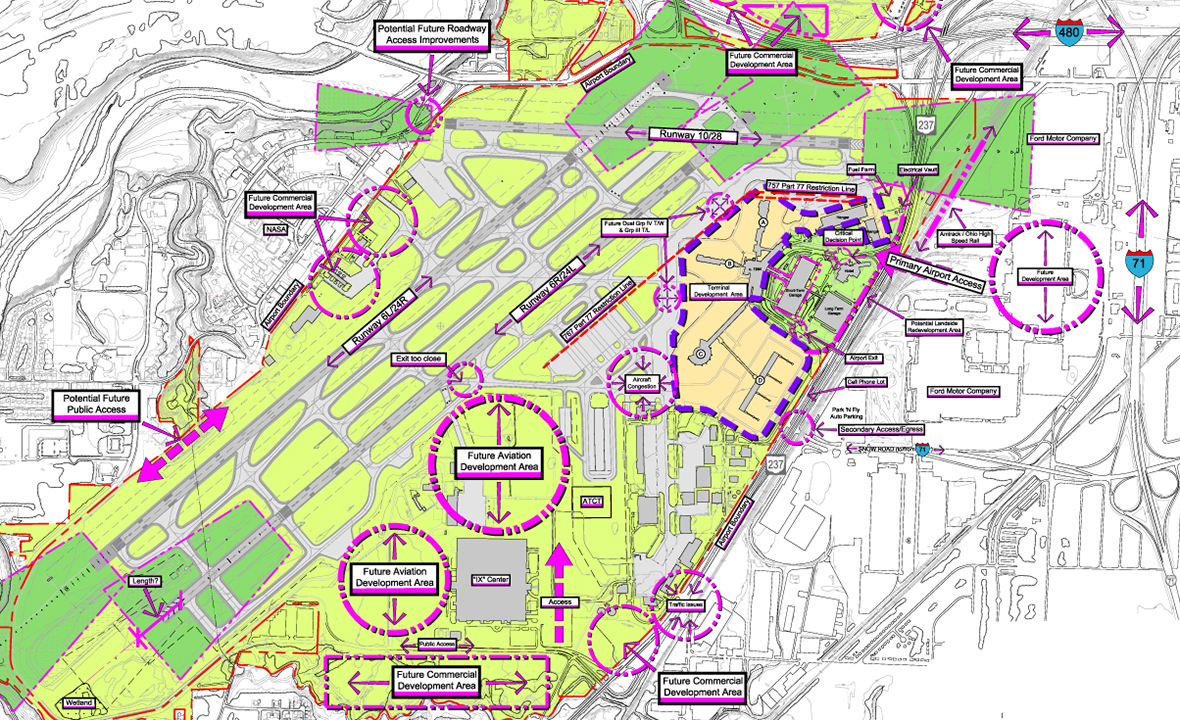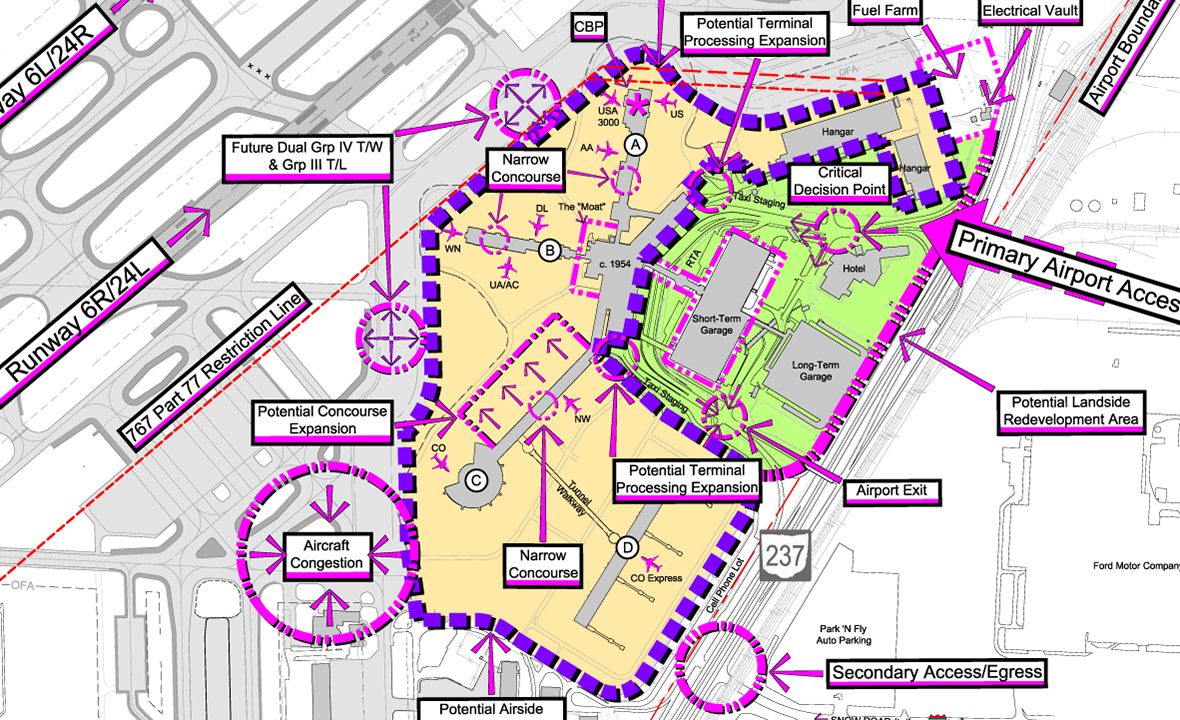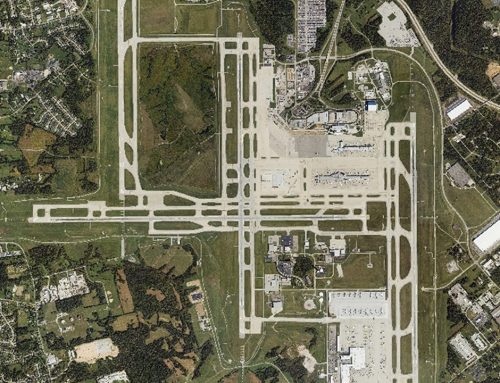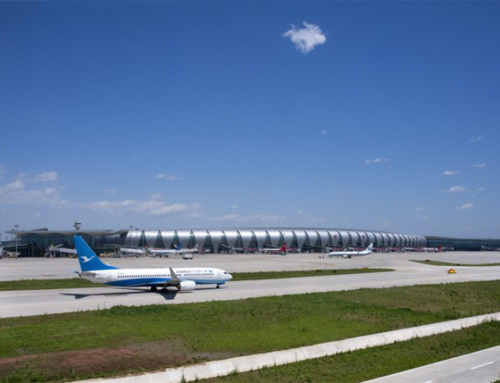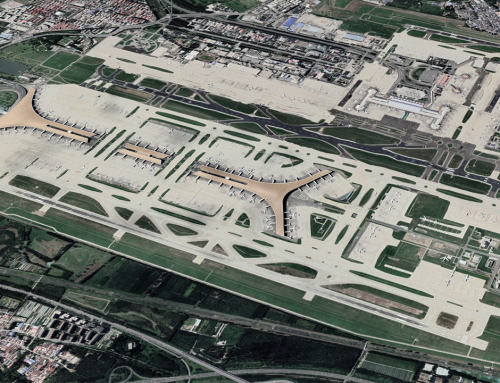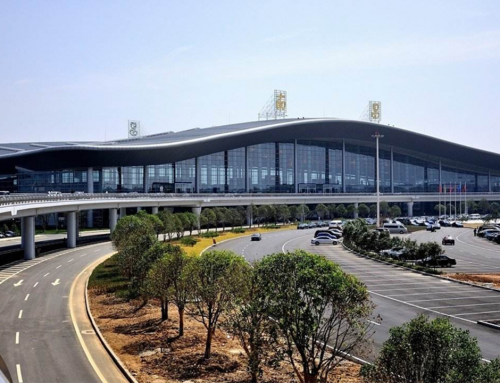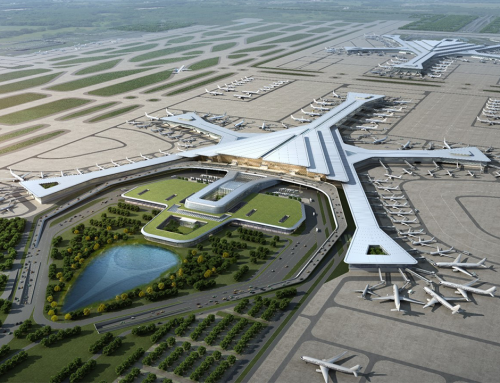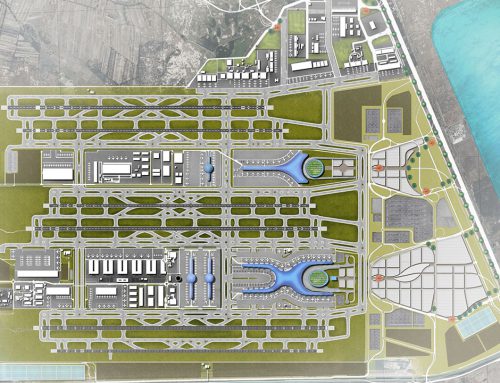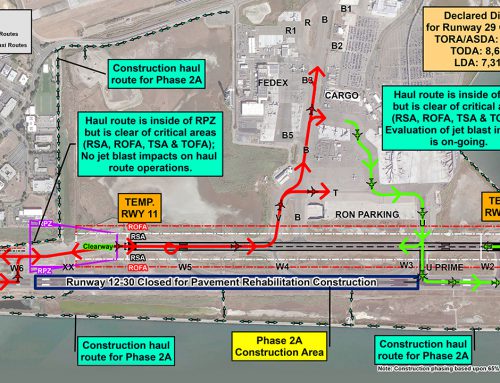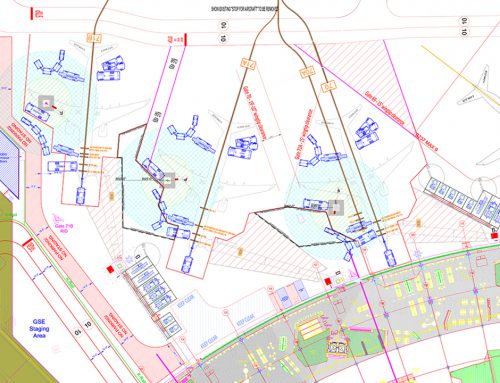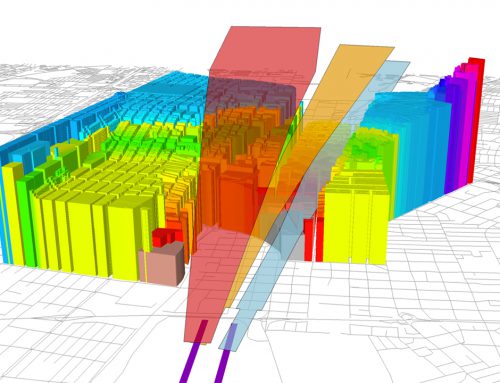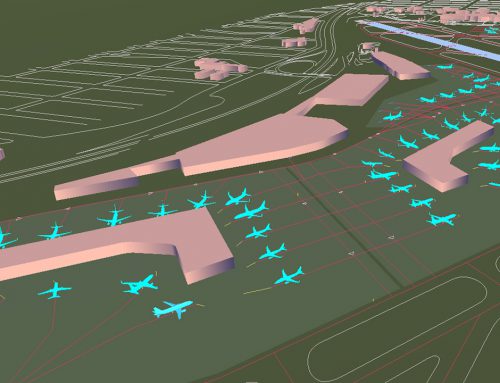Project Description
Cleveland Hopkins International Airport
Client: City of Cleveland
L&B was contracted to prepare a new Airport Master Plan and Airport Layout Plan (ALP) for the Cleveland Hopkins International Airport (CLE). L&B had successfully completed the previous CLE Master Plan, which eliminated runway intersections, increased separation between the parallel runways, and lengthened the longest runway to accommodate existing and forecast demand.
By comparison, this Master Plan focused on the passenger terminal, aviation infrastructure, and support facilities to ensure the size and design met the existing and future needs of the region and the airfield.
The 2012 Master Plan carefully evaluated the existing and future needs of the airport users to maximize the utility of the existing infrastructure and identify short and long-term opportunities to create cost effective improvements addressing the need to diversify the airport’s economic revenue base while continuing to provide economic benefit to the Cleveland region.
A combination of tenant interviews, analysis of industry trends, analysis of the age and condition of the facilities, evolving FAA requirements (related to airfield geometry and safety areas), and industry standard methods were used to identify the future facility requirements for CLE.This planning process also focused on Airfield “Hotspots” developing solutions/strategies to minimize and eliminate the possibility for runway incursions and pilot deviations (i.e., hotspots) that had occurred due to the excessive pavement near the Taxiway R/B/C intersections and Taxiway L/S/J intersections. Improvements to these areas will enhance the safety and efficiency of the infrastructure to meet existing and projected demand.
Our mission as master planners and our approach to this Master Plan was to create a flexible Airport Layout Plan to meet the City’s needs for an efficient, customer friendly airport within the fiscal realities facing both the city and the airport’s airline tenants. The plan is adaptable to be responsive to evolving trends, tenant demands, and economic circumstances.
